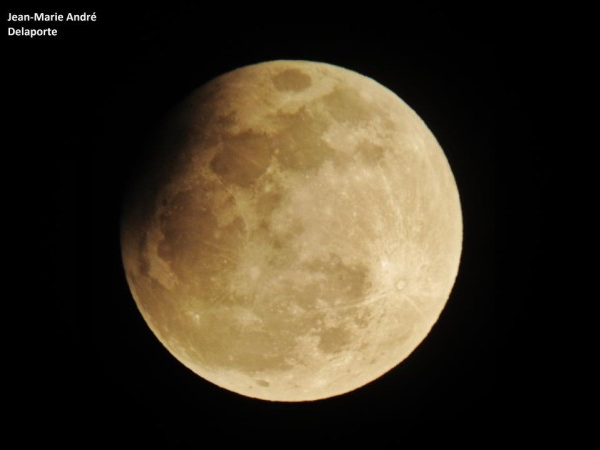On the night of October 28–29, 2023, most countries in the Northern Hemisphere will turn their chronometers back an hour, returning from summer to standard time. On the same night, a partial lunar eclipse will be visible from the territory of Ukraine as well as throughout Europe, Asia, Africa and Western Australia. During its maximum phase, the Moon’s disk will sink into the earth’s shadow by 12% of its diameter.
Lunar eclipses occur more often than solar ones, and they can be observed from the entire hemisphere of the Earth, for which the Moon is above the horizon. However, a significant part of them belongs to the penumbra, that is, during them our natural satellite “visits” the earth’s penumbra — an area of space where the Sun looks partially covered by our planet. It is very difficult to notice such phenomena without special equipment.

On the contrary, the immersion of the Moon in the earth’s shadow is simply impossible not to notice. At such moments, its brightness drops significantly, and the color changes and can become orange-red or even dark brown. Therefore, in ancient times, such phenomena were considered harbingers of misfortunes and bloodshed. On the territory of Ukraine, the total lunar eclipse was visible on January 19, 2019. Next time, we will be able to observe it on September 8, 2025.
Private lunar eclipses, unlike private solar eclipses, occur less frequently than total eclipses. The reason for this is easy to understand if we remember that the average diameter of the earth’s shadow at the distance of the lunar orbit is approximately 2.8 times the diameter of the Moon. That is, the probability that our moon will completely sink into the shadow is about 1.4 times greater than that it will do it partially (since it can do it “in two ways” — by passing north or south of the axis of the shadow cone). Residents of Ukraine will witness such a rare phenomenon next Saturday.

Under the condition of cloudless weather, we will be able to observe the full course of the blackout, starting with the immersion of the edge of the lunar disk into the earth’s penumbra, which will begin at 9:02 p.m. UTC time. However, it will be possible to see some changes on the Moon in about an hour: then it will become obvious that one part of it, closer to the center of the earth’s shadow, looks somewhat darker than the opposite. The shadow phase, which is clearly visible to the naked eye, will begin at about 10:35 p.m. and will reach its maximum at 11:14 p.m. At this time in Kyiv, our natural satellite will be almost 50° above the horizon (in the southern regions of Ukraine — even higher). Having slightly “touched” the shadow of the Earth, it will come out of it at 11:53 p.m., but after that, a penumbral eclipse will continue for some time. It will end on October 29 at 1:26 a.m.

The lunar eclipse of October 28, 2023, will be visible on the entire hemisphere of the Earth when the sun is below the horizon at this time. In the image, these territories are shown in a darker shade. Source: in-the-sky.org
During the eclipse, the Moon will be only 6° from the bright Jupiter, which will pass the opposition configuration on November 3. Even further to the east, at a distance of about 15°, weak Uranus will be located. To search for this distant planet in the moonlit sky, you will need at least a small telescope or binoculars.
The next partial shadow eclipse of the Moon from the territory of Ukraine will be visible in less than a year — on September 18, 2024. But its maximum phase will not exceed 8% by much.
More about the phenomena in the Sun-Earth-Moon system can be found in this article.
Follow us on Twitter to get the most interesting space news in time
https://twitter.com/ust_magazine
